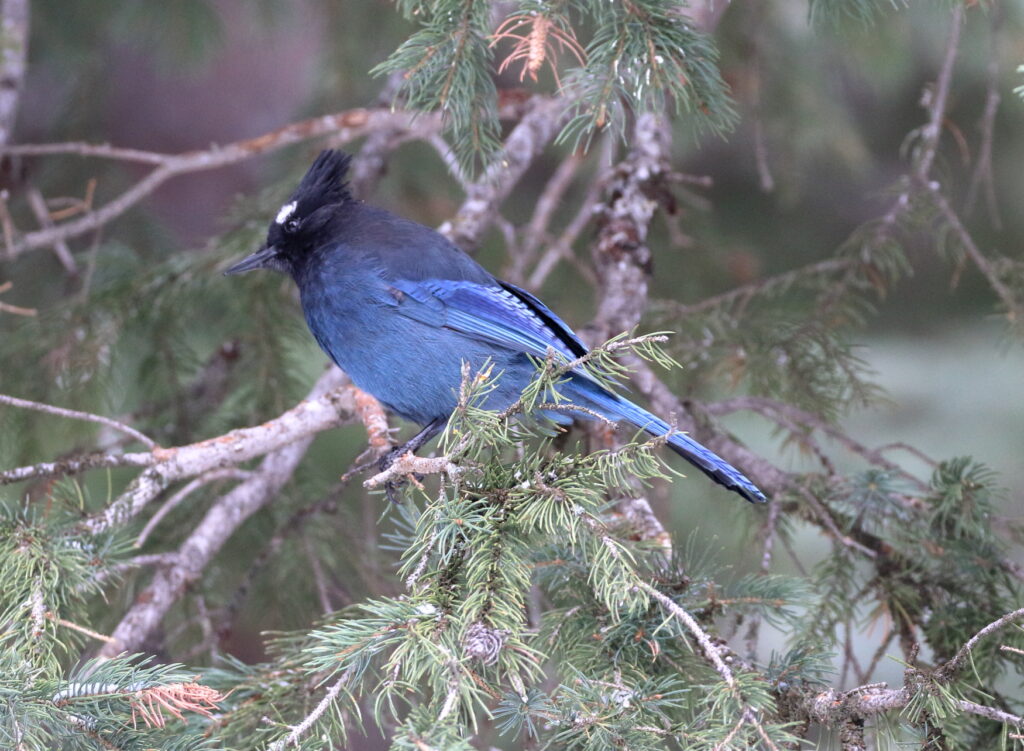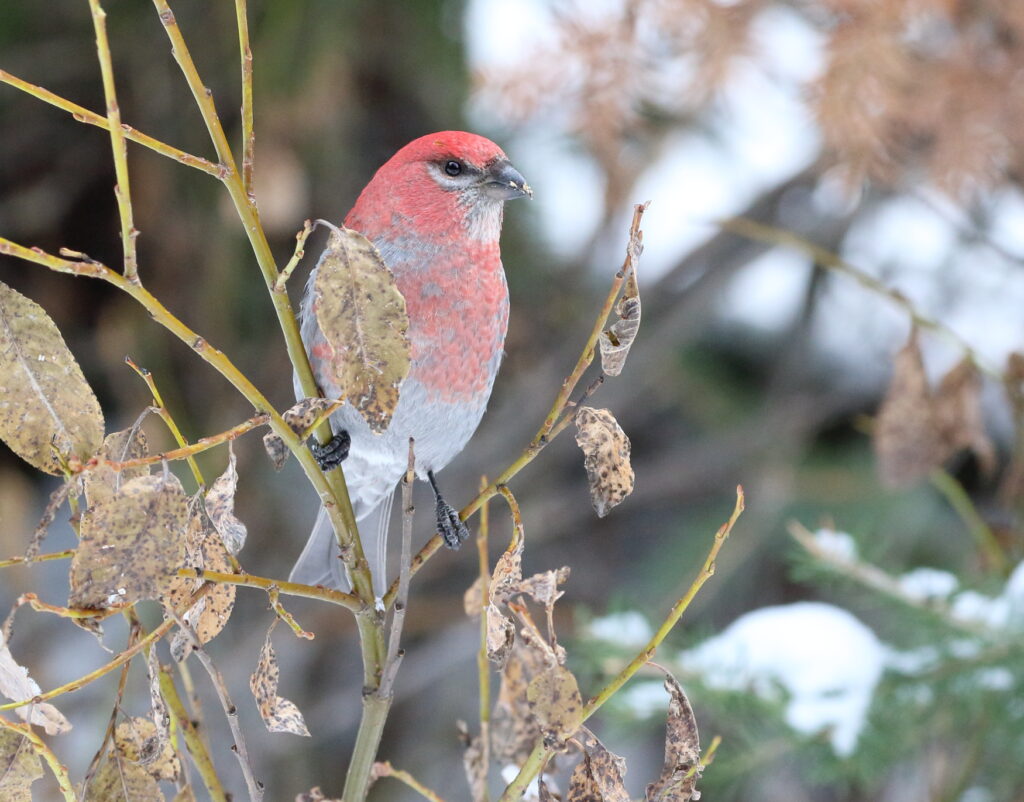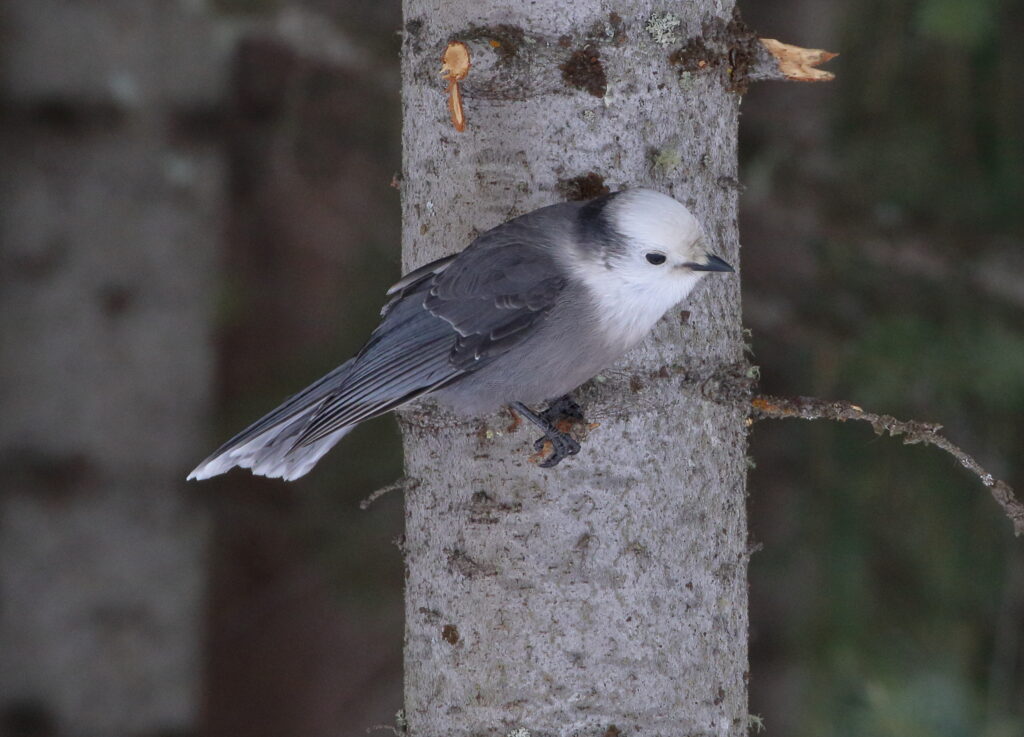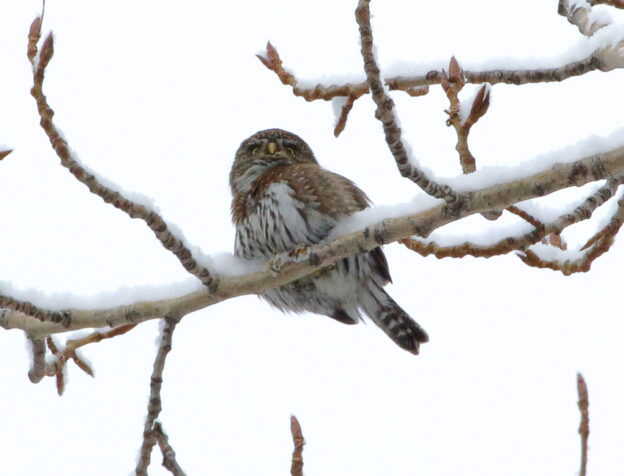Our recent post on Montana’s famous Northern Hawk Owl generated an astonishing two million views . . . or was that, er, two hundred? Either way, that’s pretty good for us, but it did put us in a quandary over how to follow up. Our answer? Look for more owls!
But first, I promised you some other winter birds. As revealed in past posts, Braden and I have discovered that one of the best way to make sure we see certain winter birds is to go to Discovery—ski area, that is. This year, on the way back from seeing the Northern Hawk Owl, we detoured through Anaconda to see what we could find. Fate seemed to shine on us as we spotted a Golden Eagle just outside of Anaconda, but when we pulled into the crowded Discovery parking lot, we didn’t see a single bird. “Hm, that’s strange,” Braden murmured. “And we forgot to bring bird seed with us,” I added.

Prepared for disappointment, we climbed out of the minivan, cameras and binoculars slung around our shoulders, and began trekking around the parking lot. After fifty yards, Braden stopped and said, “Hear that? Clark’s Nutcracker.” We followed the harsh calls toward the back of Discovery’s first aid hut, and saw a promising red flash of something flying. Drawing closer, we hit a veritable bonanza of winter birds cashing in on a generous scattering of bird seed behind the hut. Mountain Chickadees flew out to greet us first, but we soon encountered almost every other bird we could imagine: Steller’s Jays, Clark’s Nutcrackers, Evening Grosbeaks, and our favorites, Pine Grosbeaks. Each had a different strategy for attacking the food supply and we stood mesmerized for twenty minutes watching them.

“The only thing we haven’t seen,” I said, “are Canada Jays.” As we began walking back toward the car, however, Braden spotted a silhouette on top of a distant tree. He raised his binoculars for a moment, then turned to me. “Guess what it is,” he said. “Canada Jay?” I hazarded. “Yeah.” We laughed and moments later had a great photo shoot with two CAJAs that ventured closer. Leaving Discovery, we drove some side roads looking for Great Gray Owls, and the bird Braden most wanted to see before he returned to Maine for spring semester: Northern Pygmy-owl. Unfortunately, this winter the Owl Gods have decreed a limit of one owl per day for us and we saw no other Strigiformes (the bird order of owls) for the day.

Still, we both really wanted to see a NPOW before Braden left, so a couple days later we headed out to Maclay Flat, where we’d seen our very first NPOW in 2016. They weren’t reported too frequently, but they were being seen, and as soon as we got out of the car, we heard the distinctive periodic advertising call of a Northern Pygmy-owl. We followed the sound toward the river, and then crunched through snow down a side trail—only to discover a photographer set up with a very long camera lens. He silently pointed up into a tree and we worked around until we could see it—a small, fuzzy blob about thirty feet above us.

Braden and I grinned and gave each other a quiet Hi-Five. After taking some photos, we settled in to watch it. The photographer said he’d heard at least three NPOWs calling back and forth—which seemed odd in broad daylight, and seemingly well before breeding season. Biologists I’ve talked to, though, emphasize how territorial these birds are, so perhaps the vocalizations help maintain their territories all year long. Whatever was going on, we—like most people—can’t get enough of owls and once again felt privileged to enjoy them as part of our world. It helped soften the blow of missing Braden when I took him to the airport a couple mornings later. Just not enough.



You may want to check out the Saw Whet Owls at Tower Street. We saw 4 the other day down there.
Wow! Thanks for the tip, Michael!
An owl a day; what a great motto to live by. Heck, I’d settle for an owl a year, but I can’t even come close to achieving that. Lovely photos! The Pine Grosbeak is stunning indeed. That and a NOPO would be Lifers for moi.
Bird on, Dudes.
You’ll get ’em Rog! Owls are so unpredictable!
Love all these photos. Steller Jay’s are so interesting–love their plumage one of my favorite birds along with Pine Grosbeak. Never saw a Canada jay, beautiful bird maybe in the future. A great day and photo shoot:)
Thank you, Marie. Come to Montana and I’ll find you a Canada Jay!
I’m glad you have pulled away from Warblers for a few minutes to broadened your appreciation for our feathered cousins beyond your unchecked, and sometimes unholy, obsession with Parulidae. I wanted to relentlessly tease you about the new found pride you feel for finally being able to properly pronounce Strigiformes without stuttering… “Dude, we can’t hear you, we’re READING.” But then, I read your goodbye to Braden at the airport and my meanest melted away to empathy as I thought of my own son. I feel you, Man! My eyes moistened as I imagined you turning away from Braden so he couldn’t see you choking back the emotions, and then, when he was out of sight, blubbering “And who’s going to help me ID all those birds from calls or songs.” Parenting’s hard.
Scott, as always you capture the essence of . . . well, SOMETHING. I’m still trying to figure it out. Fortunately, I will soon have YOU to help me pronounce Spaghettiformes and ID the birds of Montana!